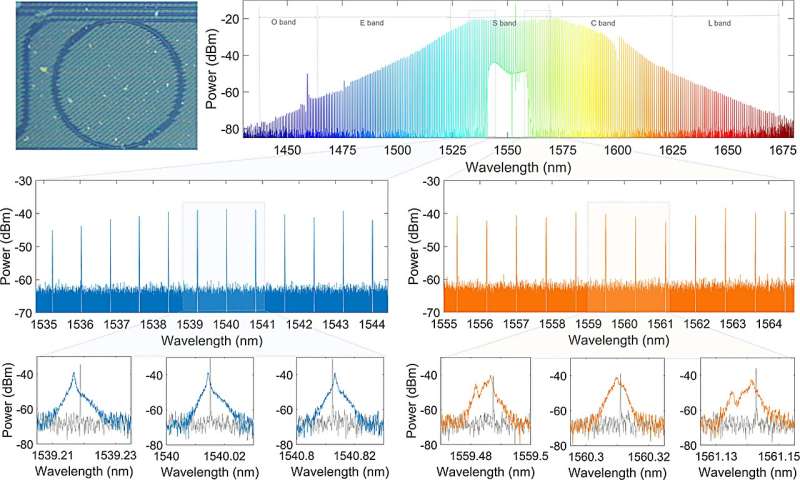This article has been reviewed according to Science X's editorial process and policies. Editors have highlighted the following attributes while ensuring the content's credibility:
fact-checked
proofread
Is it possible for a random bit generator to reach a rate of petabits per second?

The optical frequency comb is an important tool in modern physics research and applications. In 2005, Theodor W. Hänsch and John L. Hall were awarded the Nobel Prize in Physics for their pioneering work on optical frequency comb technology. This sparked a great interest among researchers in the field, leading to a series of studies on optical frequency combs.
Advanced nanophotonic technology has enabled integrated microresonators with ultrahigh Q factors and chip-scale microcombs. Among various comb dynamic states, a chaotic comb has high nonlinearity. In a chaotic comb, each comb tooth exhibits a chaotic dynamic oscillation, which is suitable for physical random bit (PRB) generation.
In 2023, Chen et al. proposed a new type of lidar for the first time using a chaotic microcomb to overcome time and frequency congestion barriers.
Researchers in Prof. Jiagui Wu's group at Southwest University (SWU), China, are interested in chaotic microcomb, which can be used to generate random bit with ultrafast rate. A microcomb contained hundreds of chaotic channels, and each comb tooth functioned as an entropy source for the PRB.
The work titled "Massive and parallel 10 Tbit/s physical random bit generation with chaotic microcomb" was published in Frontiers of Optoelectronics.
The application of chaotic optical frequency combs on random number generators has the potential to significantly improve the speed of random number generation, with the possibility of rate up to Pbits/s (petabits per second).
They used a Si3N4 microresonator with compactness and good scalability to generate chip-scale microcombs. It could simultaneously output hundreds of chaotic comb teeth through a wavelength division multiplexer and use them as entropy sources to generate massive random numbers. The randomness was verified with NIST statistical testing.
This work could offer potential chip solutions of Pbits/s PRB with the features of low cost and a high degree of parallelism.
More information: Yuqi Hu et al, Massive and parallel 10 Tbit/s physical random bit generation with chaotic microcomb, Frontiers of Optoelectronics (2023). DOI: 10.1007/s12200-023-00081-4
Provided by Higher Education Press




















